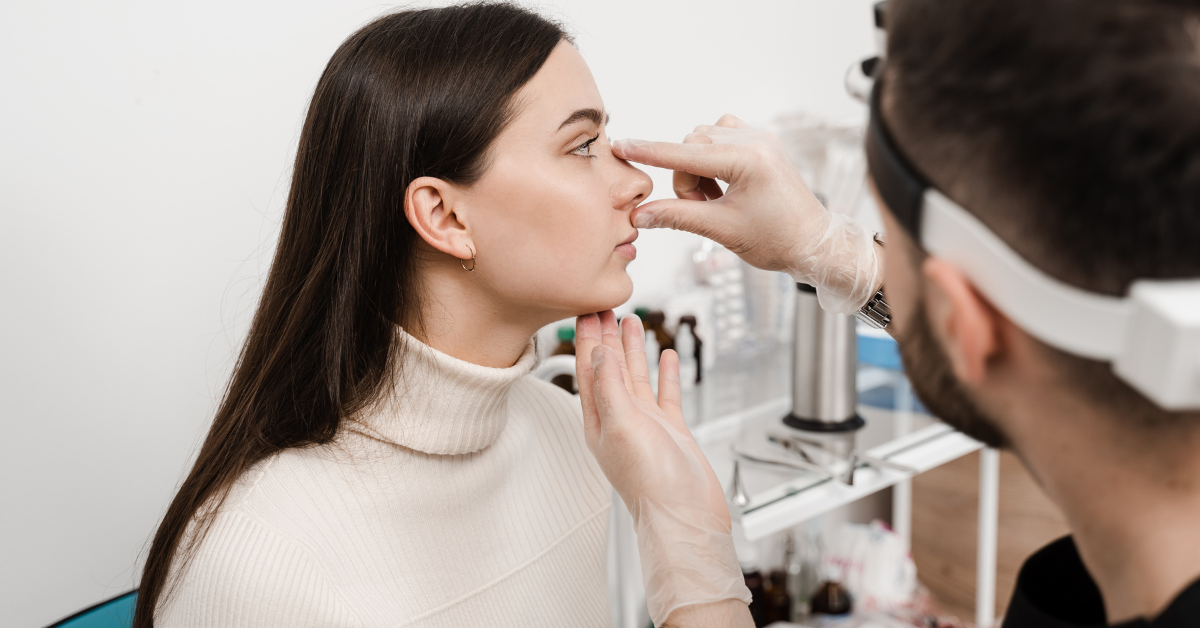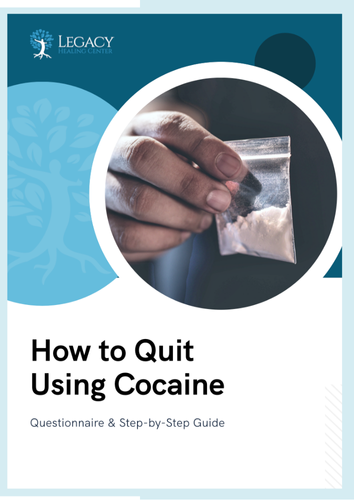Understanding Drug Nose: The Impact of Cocaine on Nasal Health
The physical toll of drug addiction often manifests in subtle yet alarming ways, one of which is the development of what’s commonly known as “drug nose.” While its effects are frequently overlooked or misunderstood, this physical symptom can serve as a stark reminder of the toll addiction takes on both the body and mind. In many cases, it is a clear sign that addiction has taken root and begun to reshape not only behavior but also physical health.
Legacy Healing Center provides more than just a way out; we offer comprehensive care that addresses the deep-rooted issues behind substance abuse. Through tailored programs, our team focuses not just on the visible symptoms but the underlying issues, helping individuals break free from the grip of addiction and begin the journey toward healing and renewal.
What Is Drug Nose?
“Drug nose” refers to the nasal damage resulting from the insufflation of drugs, especially cocaine. The drug’s vasoconstrictive effects reduce blood flow in the nasal mucosa, causing tissue necrosis and structural damage over time. Researchers have found that even if people didn’t use cocaine daily, they experienced frequent nosebleeds, chronic nasal congestion, and a diminished sense of smell.1 For many, addressing these signs of drug nose begins with a medically supervised cocaine detox program, which helps people manage withdrawal symptoms safely.
Short-Term Effects of Snorting Cocaine
In the immediate aftermath of snorting cocaine, users may experience:
- Nasal Irritation and Inflammation: The nasal lining becomes irritated, leading to discomfort and swelling.
- Cocaine Drip: A post-nasal drip where residual cocaine and mucus drain into the throat, irritating
- Cocaine Boogers: Hardened nasal mucus mixed with drug residue, leading to blockages and discomfort
Long-Term Effects of Cocaine on the Nose
Chronic snorting of cocaine can lead to severe complications, including nasal septum perforation and nasal collapse, resulting in significant health issues.2
- Nasal Septum Perforation: Development of a hole in the nasal septum, commonly referred to as a “cocaine nose hole,” resulting in breathing difficulties and chronic infections.
- Nasal Collapse: Structural weakening can cause the nose to collapse, leading to deformities and significant health issues.
- Chronic Sinus Infections: Persistent inflammation increases susceptibility to infections, causing ongoing discomfort and health risks.
Studies have shown that repeated use leads to tissue ischemia and damage, emphasizing the importance of treatment.¹ Early intervention through programs like cocaine addiction treatment can prevent further complications.
Understanding the Risks of Drug Nose
The progression of nasal damage from cocaine use can lead to irreversible consequences, such as:
- Saddle Nose Deformity: This condition occurs when the bridge of the nose collapses due to severe tissue damage; it’s a serious consequence of chronic cocaine use.3
- Increased Risk of Infections: Damaged nasal tissues provide a gateway for pathogens, leading to systemic infections.
- Overall Respiratory Complications: The damage extends beyond the nose, potentially affecting the entire respiratory system.
Research highlights the critical need for medical and therapeutic support. The comprehensive rehab care at Legacy Healing Center allows individuals to address these risks.
Legacy Healing Center’s Approach to Treatment
At Legacy Healing Center, we offer a holistic approach that focuses on the physical and psychological aspects of cocaine addiction with
- Cocaine Detox Program: Our medically supervised detox program ensures safe withdrawal, managing symptoms effectively to prepare individuals for the recovery journey.
- Cocaine Recovery: We provide personalized recovery plans that include therapy, counseling, and support groups to address the underlying causes of addiction and promote long-term sobriety.
Recognizing When to Seek Help
If you or a loved one is struggling with persistent nasal issues, such as frequent nosebleeds, congestion, or noticeable changes in the structure of the nose, it may signal a deeper problem. Coupled with a dangerous cocaine tolerance or dependence–where there is an inability to reduce or stop cocaine use despite its negative consequences–this can significantly affect both physical and emotional well-being. The distress caused by these issues can severely impact daily life, making it crucial to seek professional assistance as soon as possible to start the path toward recovery.
Take the First Step Towards Healing
Addressing cocaine addiction and its effects requires comprehensive care. Legacy Healing Center is committed to providing the support and resources necessary for recovery. For more information and to begin your journey towards healing, contact us today. For additional insights and information on addiction and recovery, visit our blog.
By understanding the risks associated with “drug nose” and taking proactive steps towards recovery, individuals can reclaim their health and well-being. Legacy Healing Center is here to guide you every step of the way.
Related Readings:
- How to Beat Cocaine Addiction
- What Are the Effects of Cocaine on the Body?
- Cocaine Withdrawal Symptoms and Timeline
References:
- Schwartz RH, Estroff T, Fairbanks DN, Hoffmann NG. Nasal symptoms associated with cocaine abuse during adolescence. Arch Otolaryngol Head Neck Surg. 1989;115(1):63-64. doi:10.1001/archotol.1989.01860250065028. Available at: https://pubmed.ncbi.nlm.nih.gov/2909232/. Accessed January 2025.
- “Damage to the nose and midface from cocaine abuse.” Ugeskr Laeger. 2023;185(40):V07230473. Available at: https://pubmed.ncbi.nlm.nih.gov/37874002/. Accessed January 2025.
- Cleveland Clinic. Saddle nose deformity: Causes, symptoms, and treatment. Available at: https://my.clevelandclinic.org/health/diseases/24978-saddle-nose. Accessed January 2025.





